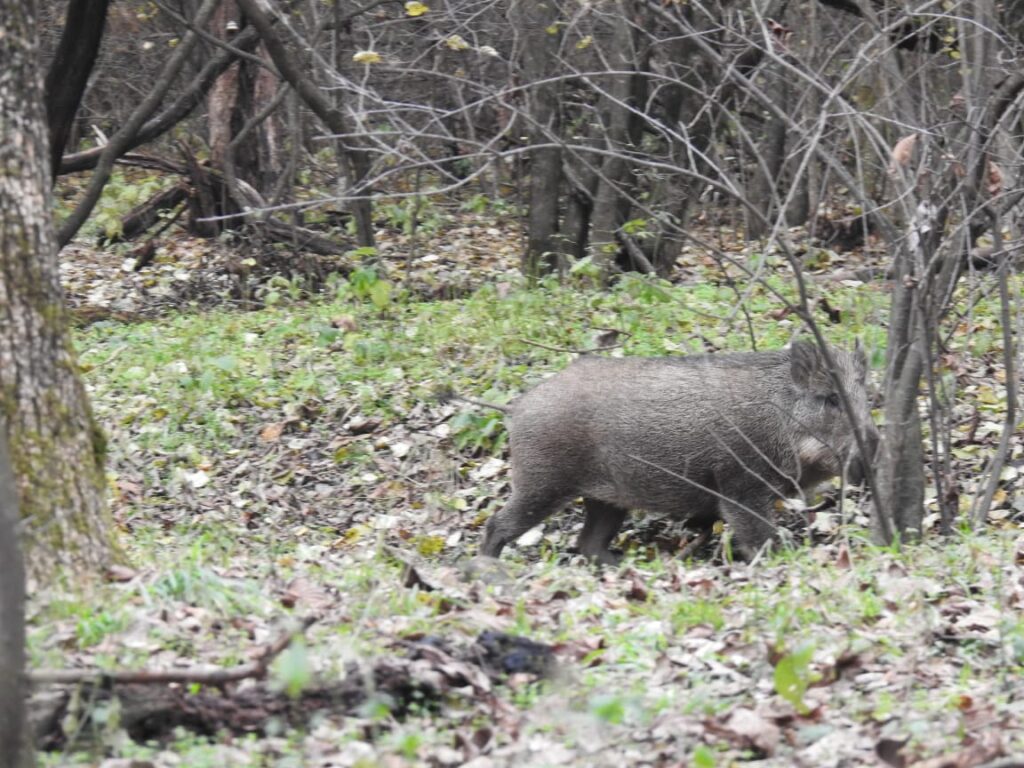
Srinagar- In Kashmir, the emergence of non-native species is posing a significant threat to the region’s biodiversity.
Alien plant species in the mountains, Alligator Gar and Wild Boar have been identified as the potential invaders, posing an imminent threat to the ecologically sensitive landscape.
As scientists and conservationists scramble to assess the extent of the invasion and its ecological implications, concerns mount over the potential long-term consequences for both the environment and local communities dependent on these ecosystems. Long term studies and targeted interventions are being called for to combat the spread of these alien species before irreversible damage is done.
Spread of non-native plants in mountain ecosystems
High-elevation ecosystems around the world including the mountains of Kashmir Himalaya have been relatively untouched by non-native plants. However, this is changing as these non-native species are moving higher up the mountains to adapt to their preferred climate and in response to human disturbances. A 2023 study published in Nature Ecology and Evolution journal has revealed an increase in the incidence of non-native species in mountainous regions, including in the Alps and the Himalayas.
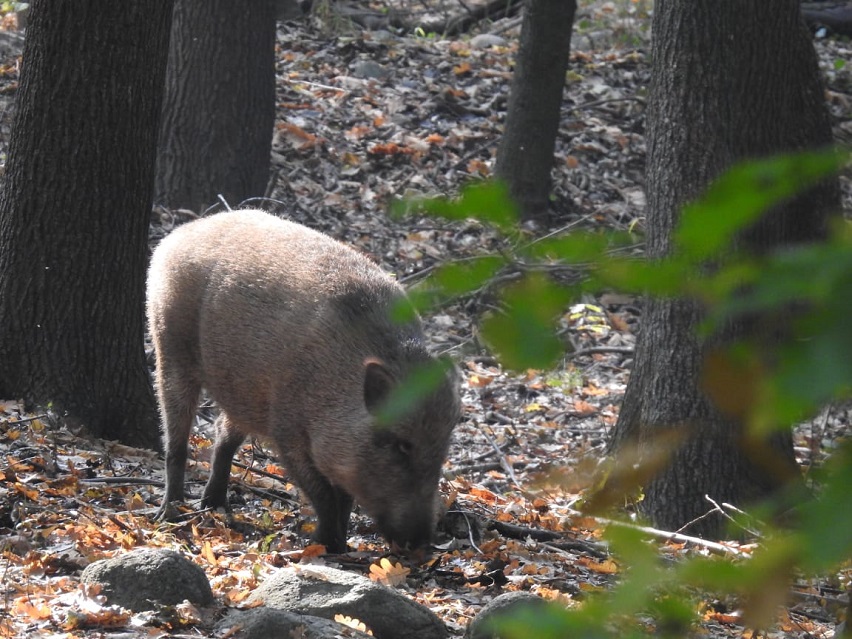
Starting in 2007, researchers conducted surveys of non-native plants along mountain roads in 11 regions on five continents.
They found that over a 5-to-10-year period, the number of non-native species increased on average by approximately 16% per decade across regions.
The results further showed that mountain environments are becoming “increasingly exposed to biological invasions, emphasizing the need to monitor and prevent potential biosecurity issues emerging in high-elevation.”
Associate Professor, Department of Botany, University of Kashmir, Dr. Anzar Khuroo, told Kashmir Observer that there are generally different types of ecosystems. These include wetlands, tropical rain forests, the mountain eco-systems, the latter usually start from 1500-2000 metres above sea level.
Dr Khuroo explained that the mountain ecosystems relatively remain untouched and less human-inhabited. Lately, these high-elevation areas are witnessing a change due to expanding tourism sector and rise in road constructions. “This has resulted in an increased human foot-print in these ecologically fragile areas. Subsequently, some new type of seeds, alien plants or insects are getting introduced there along with the human and vehicular movement. Most of them are not able to adapt in the new habitat as they come from warmer regions. However, with changes in climate and increasing anthropogenic pressures, some of these alien plants are able to acclimatise,” he said.
The botanist, with two-decade long experience in this area of research, pointed out that over a period of time, few of the acclimatised species can turn invasive and start proliferating the habitats of native flora. “With the result, they outcompete and slowly dislodge plant species that have evolved specifically to live there.”
For example, in Kashmir Himalaya, Dr Khuroo elaborated, the Mexican water lily, (Nymphaea mexicana) has proliferated across the Dal Lake. It is a species of aquatic plant that is native to the Southern United States and Mexico. “This plant species has a rapid growth rate and becomes weedy in dams, ponds and rivers. We are already witnessing the monopolization of this alien plant species in Dal which clearly shows its invasive characteristics.”
Another example of invasive plant species in mountain ecosystems of Kashmir is Leucanthemum vulgare, commonly known as the ox-eye daisy. It was introduced in the valley around 1950s-1960’s. That time, it was growing in flower beds within gardens and parks. “Over a period of time, it has escaped and presently covers a large portion of Gulmarg and other meadows. This is how the diversity rich meadows are getting overpowered by these single invasive species,” Dr Khuroo said.
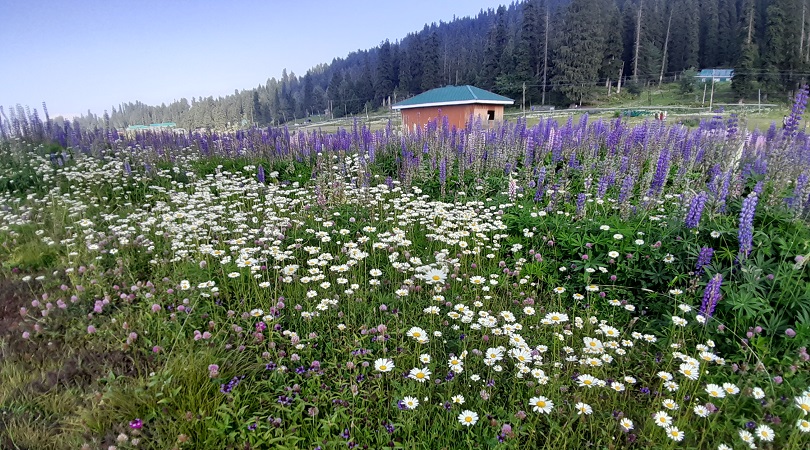
Similarly, Kashmir Himalaya is also seeing an increase in the growth of ornamental flowers like Lupin in high-elevation areas like Gulmarg. It belongs to the legume family Fabaceae. Earlier, its cultivation remained restricted to the hotel parks. “Like other invasive plant species, it is also escaping the flower beds and is now found on a large scale in the meadow. Currently, the plant species extends its growth towards forest gaps. It means the plant in near future will continue to grow at cost of other native flora,” he said.
Dr Khuroo emphasized that mechanical removal treatments are usually the first ones to look at when evaluating an invasive plant removal project. These procedures do not require special licensing or introduce chemicals into the environment. “Similarly, we can collect the seeds of the native plants in the autumn season. It’s the time of the year when plants make grass and disperse its seed. We can identify the target invaded area and remove the invasive plants from it. This should be followed by mixing the soil with native seeds. This way, we can aim for the ecological restoration of the native plants,” he detailed out.
He added, besides public awareness, the relevant Government departments like Floriculture, Agriculture, Forests can also put in place some regulations. “We should not import every plant blindly, unless there are quarantine measures taken or initial studies done to rule out their adverse invasive impact on the native biodiversity and natural ecosystems.”
Alligator gar sighted in Dal Lake
In May this year, a non-native predator fish, alligator gar was found in Dal Lake in Srinagar. Dr. Irfan Ahmad. Professor & Head. Div. of Fish Genetics & Biotechnology. Faculty of Fisheries. SKUAST, Kashmir, Rangil explained that Alligator gar is a native to North America and central America primarily from the Mississippi River basin. It is an invasive torpedo-shaped freshwater fish with razor-sharp teeth, is the largest species in the gar family.
“Gars have relatively short, broad snouts with two rows of sharp teeth in the upper jaw; other gars only have one row of teeth, and diamond-shaped interlocking (ganoid) scales. It can grow up to 8 feet long and weigh more than 300 pounds,” he said.
He elaborated Gars can live and hunt in both fresh and saltwater. The alligator gar is one of the top predators in its natural freshwater environment. It is an ambush predator that lies in wait for prey and then attacks with its large jaws. Besides, they can live for many decades. “They are considered as monsters of fresh waters. They grow very fast when young, but growth slows with age.”
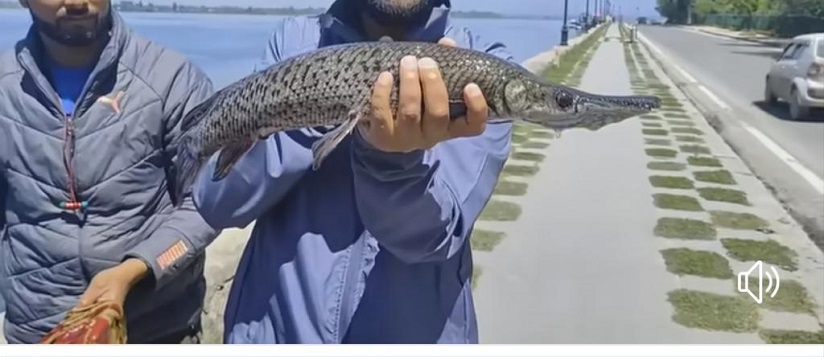
Dr Ahmad emphasized that the reason behind the appearance of Alligator Gar in the Dal Lake is that people buy such fish for home aquariums without realising the size they grow to. Once that happens, they release the fish in the nearest water body.
“When you introduce any new species in an alien environment, the theory of invasion says the new species will fill an ecological niche in the environment. It will do so by breeding exponentially so that there are maximum chances that it survives and secures its place,” Dr Ahmad pointed out.
The scientist added, for example, the Common Carp and Trout were introduced in 1956 and 1900 for the economic upliftment of people. Since its introduction (Common carp), the population of native fish species like Schizothorax or Snowtrout has declined drastically. This is because its faster growth, hardy characteristics suited the culturally eutrophicating water bodies which proved to be an extirpating factor for the local ichthyofauna. The breeding and feeding habit have also contributed to some extent.
“Research shows that the total catch composition of Schizothroax has reduced to less than 15 percent while as the common carp comprises of 80-85 percent. Amid the establishment of common carp as major catch and other exotic fish species, the sighting of alligator gar is disturbing,” he said.
Dr Ahmad said, however, only one specimen of gar has been found in Dal Lake so far. “Also, we are not sure whether it was male or female. There is more probability of this specimen being sexually immature as of yet. It takes more than 5 years for a female alligator gar to mature and more than two years for the male.
He stressed that the J&K Lake Conservation and Management Authority should keep a close vigil on the functioning of the lake by pressing in their men and machinery. “Besides, the authorities can place hoardings at important places and conduct awareness programmes on how to prevent our ecologically sensitive aquatic habitats from the invasive species. For instance, they can talk about ethical fish keeping which if we plan to own an exotic pet, do your research and plan ahead to make sure you can commit to looking after it. It’s not just large fish that can cause havoc. Grass carp and small ornamental fish species popular in aquariums can be just as great a threat to native fish species.”
Wild Boars pose a threat to critically endangered Kashmir Stag
Wild boar or wild pig (Sus scrofa) is not native to Kashmir region but is said to have been introduced during the time of Maharaja Gulab Singh (1846-1857). The animal was mainly introduced in Dachigam national park and some selected areas which were used for hunting adventures.
Intesar Suhail, Wildlife Warden of Shopian district in South Kashmir told Kashmir Observer that the species almost vanished in the mid 80’s. However, the wild pig showed signs of revival in 2013 after a gap of 30 years. It was spotted by a camera trap installed by SKUAST-Kashmir in Dachigam national park. Although, there is no population estimation done on wild boar as of yet, we have recorded its occurrence in Limber and Lacchipora wildlife sanctuary in North Kashmir, Shopian and Achabal in South Kashmir.
“It’s quite possible that the wild pig resurfaced due to the change in climate and warmer winters as it cannot survive in extreme cold,” Suhail said.
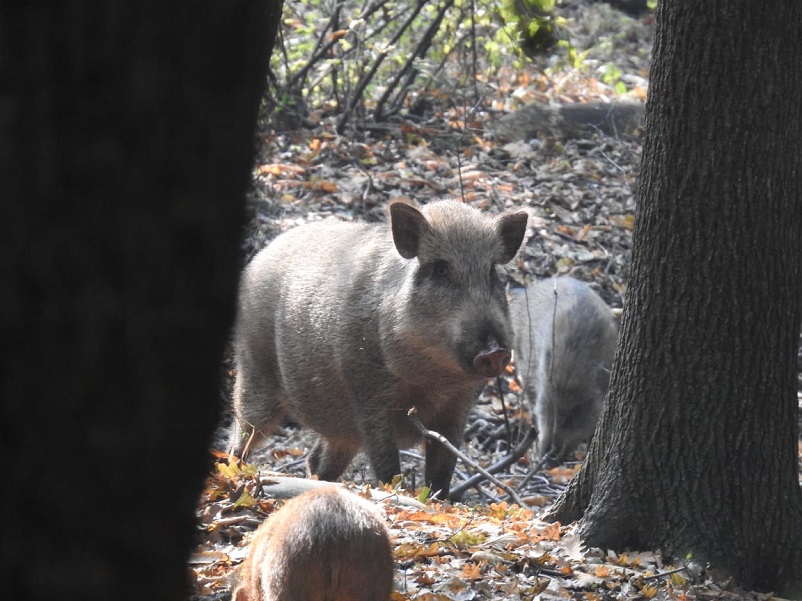
The wildlife expert noted that the wild pig is regarded as an ecological hazard for the local flora and fauna. “One of most eminent threats posed by the animal is its feeding pattern. They have the ability to uproot and destroy vegetation, which is essential for the survival of many native animal species in the region. Boars are omnivores and will eat a wide range of plant and animal matter. However, as opportunistic feeders, they will eat much of what they come across on the forest floor. Moreover, wild boar population can increase rapidly. It is a prolific breeder can give birth to a litter size of six to eight individuals in a single time.”
He explained, secondly, it poses a threat to the critically endangered Kashmir stag aka Hangul. Both the animals share the same habitat, therefore puts wild boar in direct competition for critical resources like shelter, water, food etc, with the Hangul and other animal species.
“Also, food scarcity increases for Hangul in winters. It remains restricted to lower Dachigam in the extreme cold. Since the wild pig shares same habitat as Hangul, there are chances that it might not leave enough food for the latter. Besides, one positive outcome can also emerge out of it. The wild pig might offer an alternative prey to predators like leopard. But all these factors need to be studied and investigated properly,” Suhail said.
Follow this link to join our WhatsApp group: Join Now
Be Part of Quality Journalism |
Quality journalism takes a lot of time, money and hard work to produce and despite all the hardships we still do it. Our reporters and editors are working overtime in Kashmir and beyond to cover what you care about, break big stories, and expose injustices that can change lives. Today more people are reading Kashmir Observer than ever, but only a handful are paying while advertising revenues are falling fast. |
| ACT NOW |
| MONTHLY | Rs 100 | |
| YEARLY | Rs 1000 | |
| LIFETIME | Rs 10000 | |










